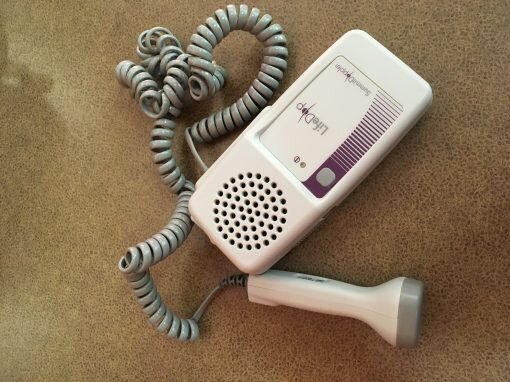The Midwife’s Bag
“What do you carry in your midwife bag?”
That’s a question I hear frequently at consults with prospective clients. The parents to be want to know what kind of tools and instruments I bring to help keep things safe at a baby’s birth. Small children often want to know what’s in that bag, too, but they’re not shy. Most of them just tear into my bag if I leave it unguarded. Family cats are good for that, too.
I know what draws the cats to my bag: the smell of an herbal tincture, valerian, that I carry. Valerian promotes relaxation, sleep, and is a good pain reliever. It also smells like dirty socks, which apparently is very appealing to cats.
Outside the cats (and a current client’s ferret), I think everyone else is just curious. After all, midwives are already a little bit out of the ordinary. There’s got to be something exotic and fascinating in all those mysterious bags we carry. It can’t just be reading glasses and protein bars for the midwife.
A few years ago, when I was still apprenticing, I attended a birth in a Mennonite farm family’s home. Their children were small, didn’t yet know where babies came from, and in keeping with their traditions, probably didn’t even realize there was a baby coming. When their mom was in labor, they were sent to a neighbor’s house. She labored overnight, delivered her baby early in the morning, and the kids came home while we midwives were packing up our bags. When we returned for the first postpartum visit, the mom told us that her little ones insisted that the midwives had actually brought the new baby in one of our bags.
I don’t carry anything quite as exciting as an actual baby, alas, but because the midwife bags seem to generate so much curiosity, I thought a post about what I do carry might be fun. So here goes…
I have basically a 3-bag system, plus a Trapper Keeper binder for my paper charts (I gave up on electronic charting for the short term, but that’s a topic for another post). Once, feeling optimistic, I posted to Facebook a picture of my neat, tidy bags lined up in the trunk of my then car, and commented that I hoped to eventually reduce down to a single bag. My midwife from my second daughter’s birth commented simply, “You won’t.” She was so right.
The midwife bag I use most is my prenatal bag. In its current incarnation, it is a very pretty basket I picked up at the apple picking festival at Graves Mountain last fall. I like the basket not only because it looks kind of crunchy and midwifey, but because it has no dark little recesses where things like pens and tape measures can hide from me. Everything is easy to find. The down side is there’s no way to close it to keep out toddlers, cats, or ferrets.
In this bag, I carry everything I need for most prenatal visits, which is surprisingly little: tape measures (plural, because I’m always losing them), for measuring moms’ bellies, a stethoscope and blood pressure cuff, and another large-size cuff. I also carry a couple of different fetascopes (special stethoscopes for listening to babies’ heartbeats), including a pricey Swedish-made one that is heavy enough to use as self-defense. This cheap purple one is my favorite, and most frequently used:
My purple fetascope
Listening to baby’s heartbeat
Although I try to limit its use to hearing the heartbeats of babies prior to 20 weeks gestation, and during labor, I also carry a handheld Doppler, which is probably more familiar to folks who have prior experience with OB rather than midwife prenatal care:
Doppler
This Doppler is waterproof, so it can be used on dry land or in a birth tub during labor, a distinct advantage over the fetascope, which would either require the mom to get out of the water or the midwife to go snorkeling in order to hear the baby’s heartbeat, which would, of course, be less than ideal.
I carry a few more odd items in my prenatal bag_ aloe vera gel, which I use in place of ultrasound gel with the doppler, a pen or two (usually), a receipt book for payments, and alcohol wipes for cleaning eveything off between clients. When needed, I also bring my hemoglobinometer and glucometer to check blood sugar and glucose, usually around 28 weeks.
Generally, that’s all that I need for prenatal visits, at least all that can be carried in a bag. The most important tools are still my ears, my undivided attention, and my hands. Everything else is secondary to those.
My next most useful bag is the birth bag. A couple of years ago, I picked up a great big black tool bag at Lowe’s, and although it isn’t pretty, it has stood the test of time. It holds a ton of stuff, has lots of compartments to organize things (I like to pretend I’ll accomplish that someday), and it’s sturdy and somewhat water-resistant. Plus, it doesn’t take up much space.
In this bag, I carry the odds and ends that are helpful at a birth. My Doppler, fetascopes, and blood pressure cuffs and stethoscope from my prenatal bag come with me to births. Inside the birth bag, I keep a heating pad for warming receiving blankets, sterile and non-sterile gloves and gauze, KY jelly, a suture kit in case of a tear that really needs stitches, a couple of catheter kits, various instruments like clamps, forceps, and cord scissors, herb tinctures for stimulating labor, releasing a reluctant placenta, stopping a heavy bleed, or soothing after pains. I carry some essential oils, Bach flower remedies, and homeopathic, as well. I generally try to have a flashlight, spare batteries, and extra pens and reading glasses in my birth bag, although these seem to disappear frequently. In one pocket I keep a few personal items like lip balm, a toothbrush and paste, and one of those little Gideon bibles and some prayer cards. There used to be a decade rosary in there, too, but I gave it away at a birth a couple of years back.
Most births don’t require much of any of the above, but I like to have things on hand, just in case. I can think of situations where just bringing out a catheter kit was enough to help a mom who couldn’t pee, without having to use the catheter after all.
The third bag is a Samsonite box from Goodwill, which I refer to as the “baby box.” Here I keep the things I use for seeing to the newborn. There is a tape measure (again!), a couple of plastic umbilical cord clamps (which I don’t use), a cutter for removing those clamps (which also doesn’t get used), and a spare pair of cord scissors. There is supposed to be a pen, and I keep birth certificate forms here. There are a few spare lancets for performing the newborn screen (which involves a heel stick), some gauze, and a DeLee mucus trap and a bulb aspirator for suctioning, although I can’t remember the last time I’ve had to do that. I keep a resuscitation bag and mask on hand, as well, although resuscitations are extremely rare.
The coolest thing in the baby box, however, is the scale, a simple spring scale with a flannel sling that attaches and holds the baby. It can weigh babies up to 12 pounds and has also been used to weigh various dolls, toy trucks, and even a friend’s cat over the years. Partners, grandparents, and siblings all usually like to help weigh the baby, and the first weigh-in, at birth, is always a wonderful photo opportunity.
In addition to the contents of my 3 bags, my car normally houses some larger, or less-needed items. I carry a birthing stool, which is rarely used, but I’m very glad to have it when needed. I also keep a submersible pump for draining birth pools. Last but not least, I try to keep a spare blanket and some good reading material or a knitting project on hand for the occasional long birth. One day I’ll remember to get a spare phone charger, too.
Every midwife has a different set of must-haves and her own system for organizing her bags. I can only speak for myself with regards to what I carry and use, but I’m pretty sure I can safely promise that virtually no midwife has it all down to a one-bag system, and none of us brings the baby in our bag.



